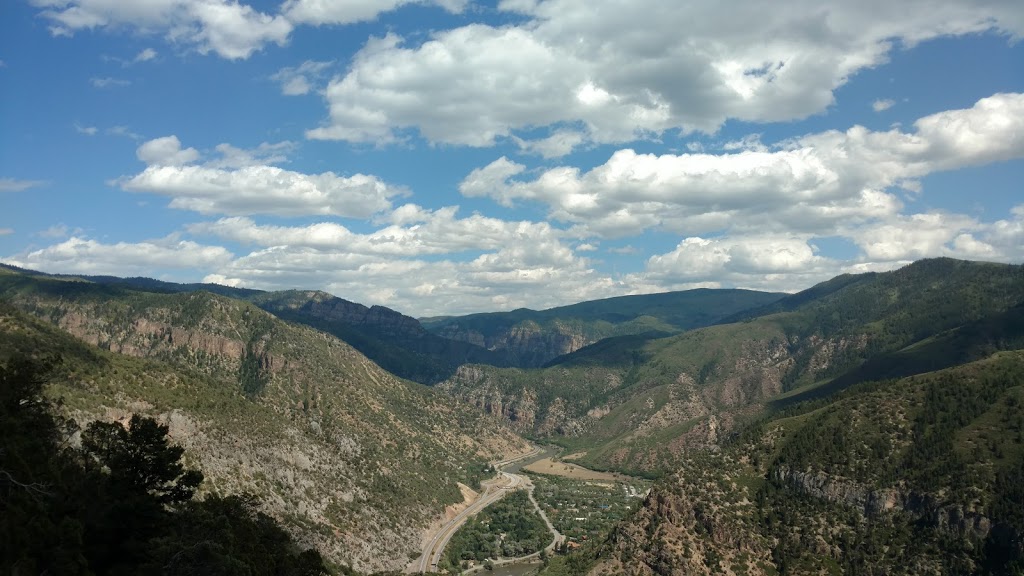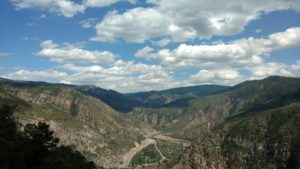|
Getting your Trinity Audio player ready…
|
In this post, I share a LaTeX template for a journal publication.
The template is from a paper I wrote as the corresponding author for the journal Nuclear Instruments and Methods.
The LaTeX template I share here should hopefully make the process of typesetting your paper easier and faster.
I wrote this paper for Nuclear Instruments and Methods (NIM) which uses the Elsevier class for LaTeX.
So this template should work if you are submitting to a journal that uses the Elsevier class. Lots of them do.
ACTION ITEM 1
Check whether your intended journal uses Elsevier. By visiting their website and reading through the instructions for submission. If yes, proceed with the template below. If not, proceed with caution.
ACTION ITEM 2
Make a directory for your paper on your computer.
ACTION ITEM 3
Choose a LaTeX editor and download it. My favorite is TeXShop.
The role of the editor is that it will help you type up and edit your paper. It’s like Microsoft Word except for typesetting in LaTeX. You will write your paper into the editor and preview the pdf version of it as you go.
ACTION ITEM 4
Download the file elsarticle.cls and make sure it is in the directory of your paper.
The website of the journal you are submitting to should have links to download the Elsevier class under their submission instructions.
For the template I am providing here, there should be 4 types of files in your directory containing the paper:
The elsarticle.cls file you downloaded
File ending with .tex – This is your main file where you will be writing/editing to create the paper
File ending with .bib – This is the file that will generate your bibliography. I will provide a template for this too.
Image files ending with .png, .jpg, .pdf, etc. These are the image files that you want to include in your paper. Make sure that all the images that you want in the paper are in the directory where you are editing the paper.
Next, you are going to start to write into the .tex file.
ACTION ITEM 5
Open up a new document using your LaTeX editor. Copy and paste the lines below into the document. Save the file as something like filenameofpaper.tex
Right now, the template is set to make a preprint version for the NIM journal.
Change the name of the journal to the one you are submitting to.
Edit the paper title, author names, and author affiliations.
If you are submitting as the corresponding author, you will need the extra lines that are shown below along with your author name.
To comment out a line: Start the line with “%” without the quotes.
Typeset the percent symbol by using “\%”
documentclass[preprint,12pt]{elsarticle} usepackage{epsfig} usepackage{amssymb} journal{NIM Section A} usepackage{subfigure} usepackage{lineno} usepackage{float} usepackage{bm} usepackage{graphicx,epstopdf} usepackage{titlesec} titleformat{paragraph}[runin] {bfseriesscshape}{theparagraph}{1em}{} setcitestyle{square}
begin{document} begin{frontmatter} date{today} title{Dynamic tunable notch filters for the Antarctic Impulsive Transient Antenna (ANITA)} author[OSU] {F.~Lastname} author[OSU] {F.~Lastnamecorref{cor1}} ead{oindreeb@gmail.com} cortext[cor1]{Corresponding author} address[OSU] {Dept. of Physics, The Ohio State Univ., Columbus, OH 43210}
begin{abstract} Note the syntax for the following. They keep coming up. Number with units: $>10^{18},mbox{eV}$ To avoid separating unit from its number: 45~dB Typeset the symbol ~: $sim,mumbox{V-level}$ Angles and degrees: $90^{circ}$ end{abstract} begin{keyword} neutrino radio detection sep ultra-high-energy sep notch filtering sep military communications satellites end{keyword} end{frontmatter} linenumbers section{Introduction} subsection{Continuous-wave interference} section{ANITA Payload} label{payload}
begin{figure}[H] centering includegraphics[width=1.0textwidth]{anita.pdf} caption{The ANITA-IV payload just prior to launch at the NASA LDB Facility near McMurdo Station, Antarctica. The red box encloses three antennas that make up a single phi sector.} label{anita} end{figure}
begin{figure}[H] centering includegraphics[width=1.0textwidth]{anita4systemdiagram.pdf} caption{The ANITA-IV signal processing chain for a single RF channel.} label{system} end{figure}
begin{figure}[H] centering subfigure{ includegraphics[width=0.93textwidth]{anita3_threshold_time20_2.pdf} label{anita3thresholds} } >subfigure{ >includegraphics[width=0.93textwidth]{anita4_threshold_time_2.pdf} label{anita4thresholds} } caption[]{SURF DAC thresholds in arbitrary units of DAC counts for a single channel for the ANITA-III (top) and ANITA-IV (bottom) flights. } label{thresholds} end{figure}
begin{figure}[H] centering subfigure{ includegraphics[width=0.93textwidth]{anita3_phimasking.pdf} label{} } subfigure{ includegraphics[width=0.93textwidth]{anita4_phimasking.pdf} label{} } caption[]{Masking in the ANITA-III (top) and ANITA-IV (bottom) flights. } label{phimasking} end{figure}
Here is a short table I had in the paper:
begin{center} begin{tabular}{ c c c c c} Amplifier & Part name & Gain & Power consumed & Noise figure\ AMP~1 & BGA2851 & $24.8,mathrm{dB}$ & $35,mathrm{mW}$ & $3.2,mathrm{dB}$\ AMP~2 & ADL5545 & $24.1,mathrm{dB}$ & $300,mathrm{mW}$ & $2.9,mathrm{dB}$\ end{tabular} end{center}
At the end of the document, you want something like the following lines:
section{Future plans}
section{Acknowledgments} We are grateful to NASA for their support for ANITA through Grant NNX15AC20G.....
section{References} bibliography{references} bibliographystyle{elsarticle-num-names.bst} end{document}
ACTION ITEM 6
Open another new document and save it as references.bib
Note the same name used in the above line, without the .bib part.
Open the .bib file and edit it.
Copy and paste the following lines into the .bib file.
@article{instrPaper,
author = "Gorham, P. W. and others",
title = "{The Antarctic Impulsive Transient Antenna Ultra-high
Energy Neutrino Detector Design, Performance, and
Sensitivity for 2006-2007 Balloon Flight}",
collaboration = "ANITA",
journal = "Astropart. Phys.",
volume = "32",
year = "2009",
pages = "10-41",
doi = "10.1016/j.astropartphys.2009.05.003",
eprint = "0812.1920",
archivePrefix = "arXiv",
primaryClass = "astro-ph",
SLACcitation = "%%CITATION = ARXIV:0812.1920;%%"
}
@article{wu,
author = { Zhengzheng Wu and Yonghyun Shim and Mina Rais-Zadeh},
title = {Switchable wide tuning range bandstop filters for frequency-agile radios},
journal = {IEEE Xplore},
year = {2012},
}
@article{askaryan,
author = "Askar'yan, G. A.",
title = "{Excess negative charge of an electron-photon shower and
its coherent radio emission}",
journal = "Sov. Phys. JETP",
volume = "14",
year = "1962",
number = "2",
pages = "441-443",
note = "[Zh. Eksp. Teor. Fiz.41,616(1961)]",
SLACcitation = "%%CITATION = SPHJA,14,441;%%"
}
@mastersthesis{milsat,
title = {Comparing the capabilities and performance of the ultra high frequency follow-on system with the mobile user objective system},
author = {Matassa, C. K.},
year = {2011},
school = "Naval Postgraduate School",
URL = {https://calhoun.nps.edu/handle/10945/5711},
publisher = {Calhoun}
}
{labrador,
author = "Varner, G. S. and Ruckman, L. L. and Gorham, P. W. and
Nam, J. W. and Nichol, R. J. and Cao, J. and Wilcox, M.",
title = "{The large analog bandwidth recorder and digitizer with
ordered readout (LABRADOR) ASIC}",
journal = "Nucl. Instrum. Meth.",
volume = "A583",
year = "2007",
pages = "447-460",
doi = "10.1016/j.nima.2007.09.013",
eprint = "physics/0509023",
archivePrefix = "arXiv",
primaryClass = "physics",
SLACcitation = "%%CITATION = PHYSICS/0509023;%%"
}
@article{lab4d,
author = "Roberts, J. and Oberla, E. and Allison, P. and Varner, G.S. and Spack, S. and Fox, B. and Rotter, Ben",
title = "{LAB4D: A Low Power, Multi-GSa/s, Transient
Digitizer with Sampling Timebase Trimming
Capabilities}",
journal = "Nucl. Instrum. Meth.",
volume = "1",
year = "2017",
pages = "12",
archivePrefix = "arXiv",
primaryClass = "physics",
SLACcitation = "%%CITATION = PHYSICS/0509023;%%"
}
@ARTICLE{ritc,
author = {{Nishimura}, K. and {Andrew}, M. and {Cao}, Z. and {Cooney}, M. and
{Gorham}, P. and {Macchiarulo}, L. and {Ritter}, L. and {Romero-Wolf}, A. and
{Varner}, G.},
title = "{A low-resolution, GSa/s streaming digitizer for a correlation-based trigger system}",
journal = "ArXiv e-prints 1203.4178"
}
Bibliography
The above lines contain examples of the LaTeX syntax for referencing different types of papers in the bibliography.
Note that you can give each paper you reference a nickname.
In the .bib file, you tell LaTeX this nickname for each paper as the first argument after opening the first curly bracket after @ARTICLE
Then, when writing the paper in the .tex file, you can reference a paper in the bibliography by using its nickname:cite{nickname you chose in .bib file}
Please feel free to share any LaTeX problems or tips below.
Popular post:
https://howtophd.org/how-to-actually-finish-your-phd-in



Leave a Reply